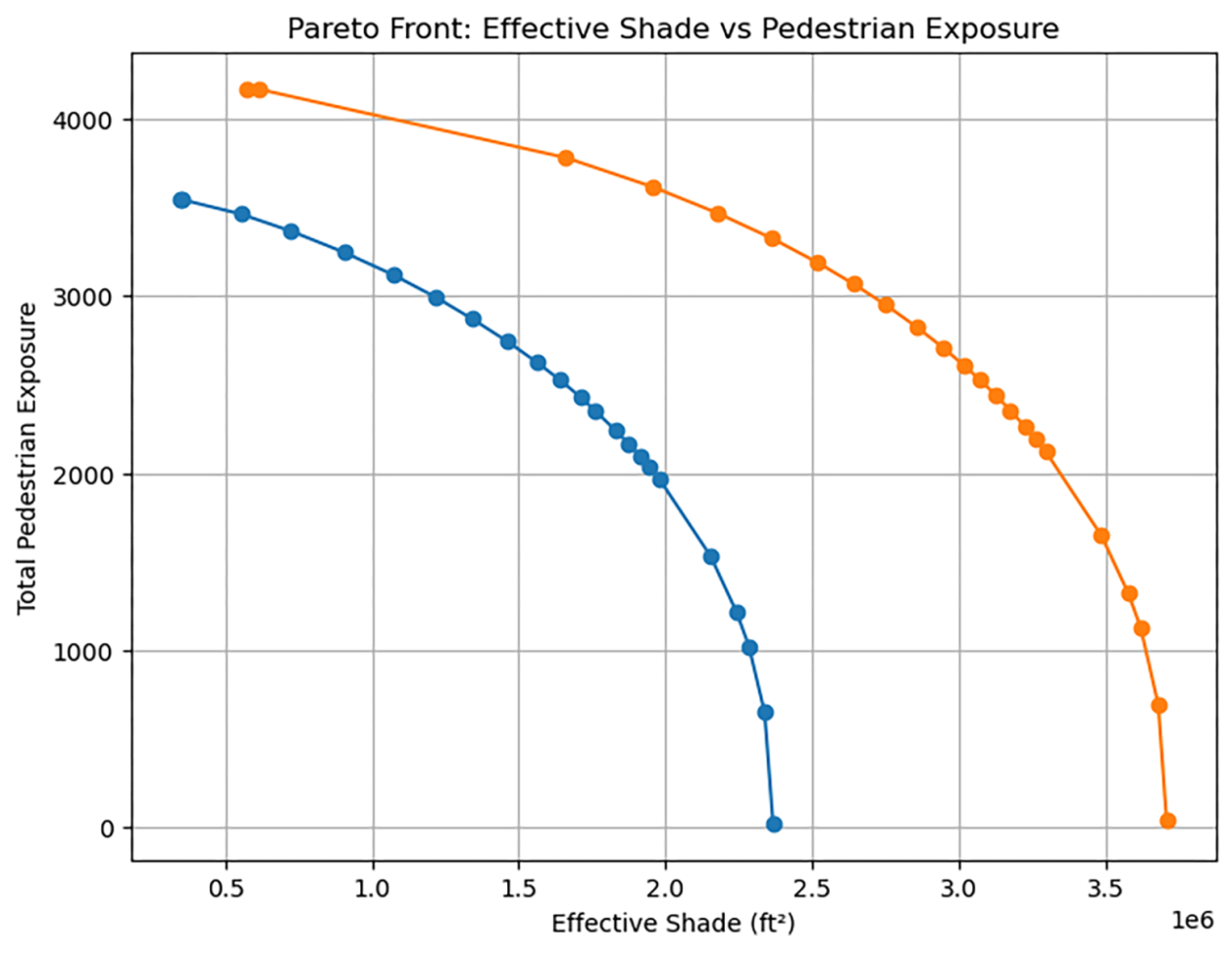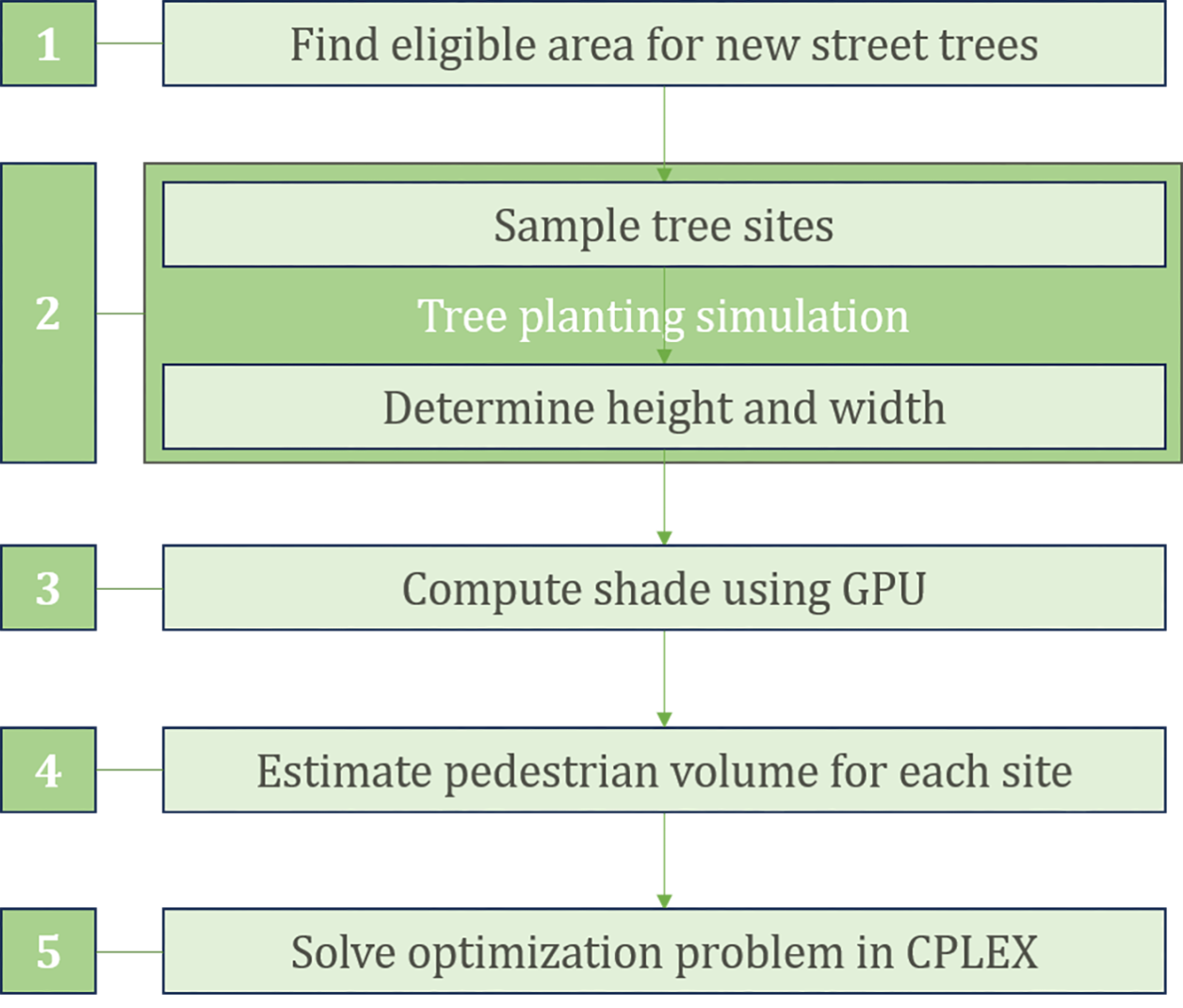Optimizing Street Tree Placement for Maximum Shade and Pedestrian Benefit
This study develops a comprehensive framework for optimizing the placement of street trees to enhance both thermal comfort and pedestrian utility in urban environments. By integrating high-resolution LiDAR data, anonymized pedestrian mobility patterns, and municipal planting regulations, the research introduces a multi-objective optimization model that simultaneously maximizes unique shade coverage and pedestrian exposure benefits. Using Philadelphia as a case study, the analysis evaluates approximately 667,000 candidate planting locations based on simulated canopy projections and foot traffic density derived from point-of-interest visit data. Shade modeling employs GPU-accelerated ray tracing to quantify incremental shadow contributions and identify redundancies due to overlapping canopies. Pedestrian benefit is estimated through a distance-decay weighted scoring system. The model incorporates a tunable weighting parameter to balance shade and exposure outcomes. Results reveal a clear trade-off: prioritizing shade directs plantings to low-traffic open areas, while emphasizing pedestrian benefit concentrates trees along heavily trafficked corridors. An intermediate balance optimizes both objectives. Increasing the planting budget further enhances the dual benefits without altering the fundamental trade-off structure. This methodology offers urban planners a scalable and transferable decision-support tool for evidence-based street tree siting. Limitations include the static treatment of canopy growth and the absence of feedback effects on pedestrian behavior.
Learn More






